Artificial waterfall: original ideas in landscape design
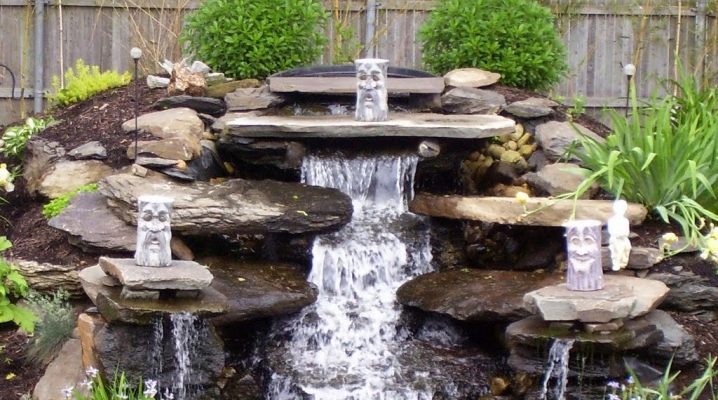
A beautifully, tastefully decorated suburban area is now not a luxury, but a sign of good taste. An artificial waterfall is a popular landscape design element that is a great way to decorate any garden. It creates an atmosphere of peace, tranquility and disposes to rest. Ornamental plants and stones will add attractiveness to it.
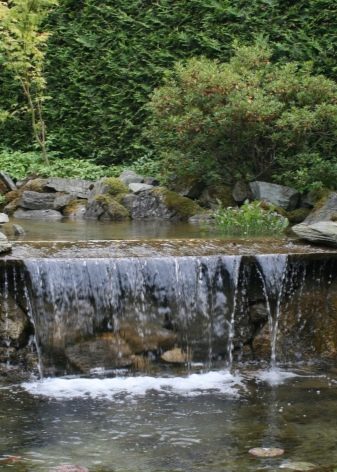
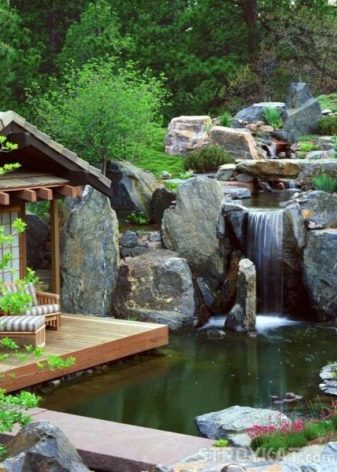
Peculiarities
Many summer residents would like to have a waterfall on their site because of its natural, natural beauty, the benefits that it brings to the garden, the peace that the contemplation of water gives. But not everyone dares to take this step. It seems that the matter is too complicated, costly, time consuming.
In fact, creating an artificial waterfall is not as difficult as it might seem at first glance. You only need take into account the features of the landscape of the site, its size, as well as the distance from the house - the waterfall must be located at a distance of at least three meters from it.
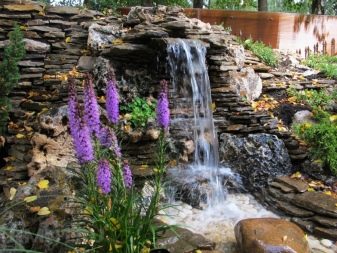

If there is a reservoir in the garden: a pond, a lake - we can assume that half of the work has already been completed. After all, a waterfall consists of ledges and a container into which water flows and from where it rises to the top of the ledges. If such a capacity is already available, it remains only to make cascades.
What kind of waterfall will be depends on the style in which the entire site is decorated. If it is minimalism, hi-tech or another modern style, strict geometric lines, clear proportions, and appropriate materials will be appropriate.
In all other cases, the waterfall should look as natural as possible.
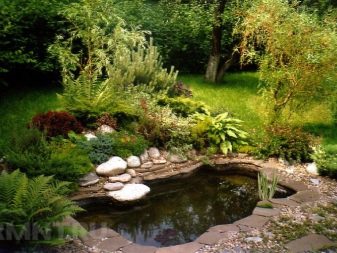
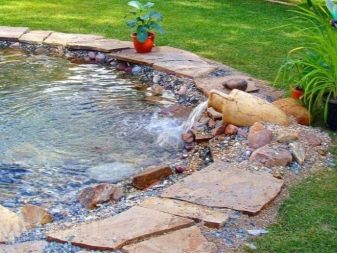
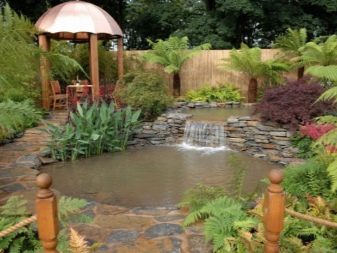
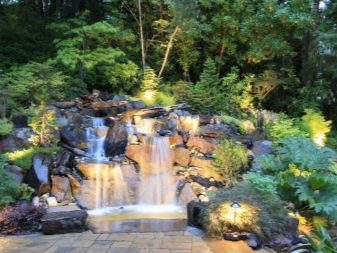
It is optimal if the forms of the waterfall seem to continue the natural relief of the site, resemble natural formations, merge with the landscape.
Decorative elements - stones, plants, shells, etc. - should also emphasize the stylistic orientation of the reservoir and be combined with the design of the entire site.
After the depth of the waterfall tank has been determined, the height of its ledges, based on this, the required pump power has been calculated, equipment and consumables can be purchased.
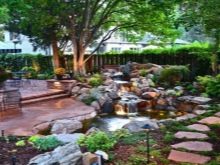
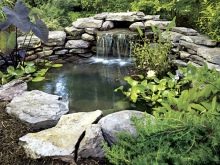
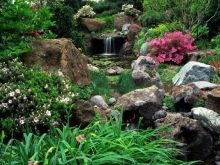
Materials (edit)
It doesn't take much to create a waterfall. It:
- sand (it is better to take medium-grained);
- decorative stones for decoration;
- cement;
- waterproofing materials (this can be PVC film, EPDM or butyl rubber film, concrete - if the coating is planned to be made from it);
- pump.
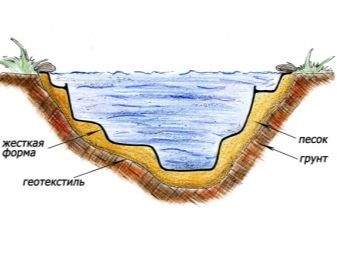
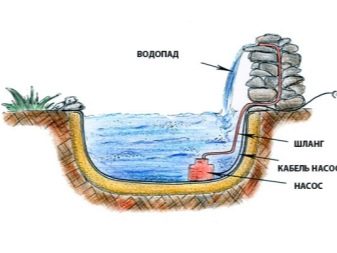
Each coating has its own advantages. Pvc the film has high strength, withstands water pressure and temperature changes well, it is absolutely waterproof and affordable. Among the shortcomings, one can single out a modest assortment of colors, the presence of seams, which are quite clearly visible against the general background, and sensitivity to mechanical damage.
EPDM (or butyl rubber) film has good elasticity, is insensitive to UV and frost, it is not afraid of ground movements and bottom shrinkage.
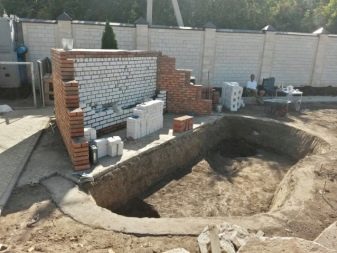
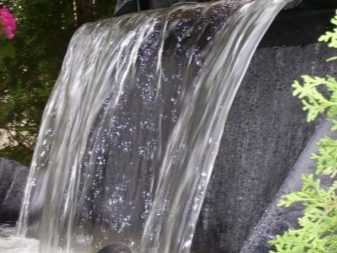
Concrete pavement will take longer to build, but will provide additional protection against damage and leaks. The concrete cover is created in three stages:
- Laying on the bottom of a thick polyethylene film.
- Construction of a metal frame.
- Pouring concrete.
You can also use a ready-made bowl. In this case, when marking the contours, the bowl is turned upside down and all the contours are outlined. A pit is dug along the outlined lines, a little larger than the bowl in size. After installing it, the voids between the walls of the bowl and the pit are covered with sand.
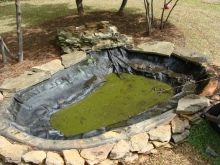
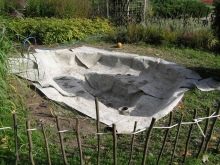

As for pumps, they are divided into two types - submersible and non-submersible. The former are installed in the very bowl of a waterfall or fountain, the latter are placed on the shore. Onshore pumps are more difficult to camouflage than submersible models.
When choosing a pump, two factors play an important role:
- to what height does it raise the water (should be at least the height of the cascade);
- its productivity (l / min; how much water can be pumped in a minute).
You can also create a waterfall or fountain at home, for example, in a winter garden. In this case, fewer materials are required, and the pump may be less powerful.
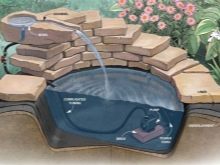
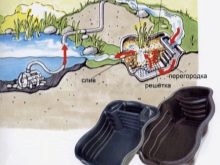
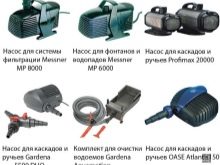
How to do it?
Step-by-step instructions, a kind of master class, where everything is clearly and clearly described, will help to create a waterfall in the country with your own hands.
- First of all, in the garden you need choose a placewhere the reservoir will be located. The distance between him and the house must be at least 3 meters. It is optimal if there is a natural elevation of the desired height at the chosen place. If there is none, it can be formed independently, using the earth taken out when digging a foundation pit.
- The next step after choosing a location is mark the shape of the future waterfall. This is easily done using a torn corner bag filled with sand. When you shake the bag, the sand will pour into the ground in a neat trickle, and the contours of the reservoir will be clearly visible.

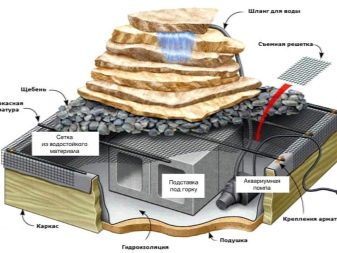
- Having outlined the contours of the waterfall with all the ledges, you need remove the sod and proceed directly to digging the pit, forming ledges in the process. The height of the ledges should not exceed 30 cm. The depth of the pit itself should be no more than 1 m (unless it is planned to launch fish or other living creatures into it).
- In the finished pit, remove all foreign objects - stones, branches, twigs - that can break the film. Bottom, align the ledges, compact... Cover with a layer of sand (5-10 cm), smooth it and spill thoroughly with water. In order to avoid further germination of plants in the reservoir, it is advisable to cover the bottom and ledges with geotextiles.
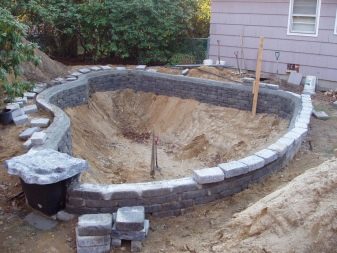
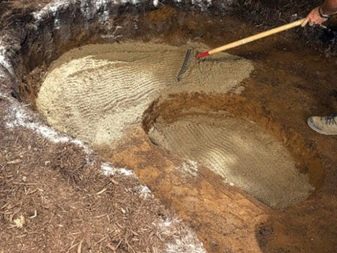
- Spread the film... Align it. Lay the bottom and ledges with stones, making sure that the film is not visible anywhere. You can use pebbles or small boulders. Laying will become easier if you let the material lie in the sun for 15 minutes - it will soften and installation will become easier.
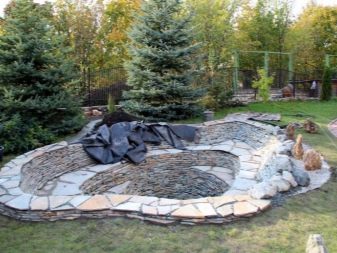
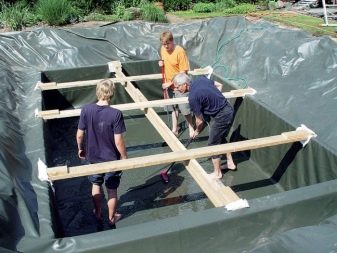
- Installation of an electric pump. If the model is submersible, it is installed on the bottom of the reservoir in a basket filled with stones. The submersible pump is located onshore and carefully camouflaged. This need for camouflage makes working with a non-submersible pump longer and more laborious. When installing a pump of any model, remember that power sources should be located at a distance of at least 1.5 m from the reservoir, carefully covered with a moisture-proof material and protected from mechanical stress. In addition, it is necessary to ensure convenient and easy removal of the pump - for cleaning and possible repair.
- Running water and checking the tightness of the coating.
If the test run was successful, you can start decorating the waterfall.
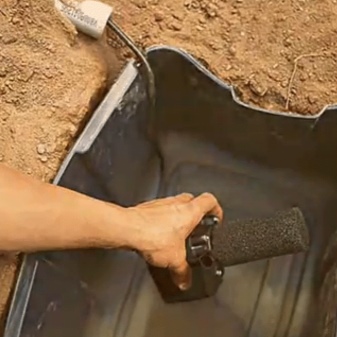
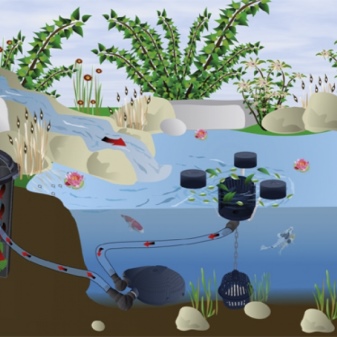
Decor elements
The use of natural stone is the best solution when decorating a waterfall. The stone has good decorative properties, durability, is not sensitive to temperature extremes and precipitation, which means it will ensure the durability and aesthetics of the reservoir.
It is important to completely cover the film with a stone so that it is nowhere to be seen. Sections of the waterproofing coating peeking between the stones spoil the appearance of the reservoir, create the impression of sloppiness, negligence, and inaccuracy.


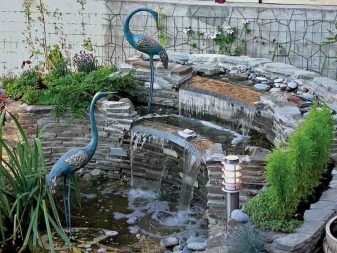
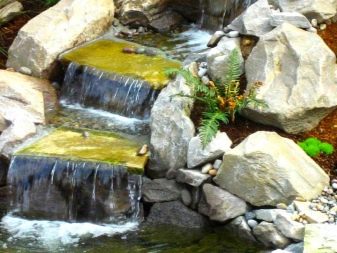
If the style of the reservoir allows, you can use a variety of household items: clay bowls and jugs, pipe cuttings, construction waste, even plumbing (of course, within reasonable limits). A mosaic of shards of crockery, laid out behind the water wall, will complement it wonderfully. Against this background, the stream of water will sparkle with new colors.A similar technique will be good when decorating a waterfall in the Moroccan, Arabic style.
In this case, it is not necessary to use only traditional colors - blue and white. The more multicolored, the more iridescent the mosaic is, the brighter the waterfall itself will look.
The result is a truly fabulous corner, especially if you supplement it with garden lanterns installed on the shore or floating in the bowl of the reservoir.
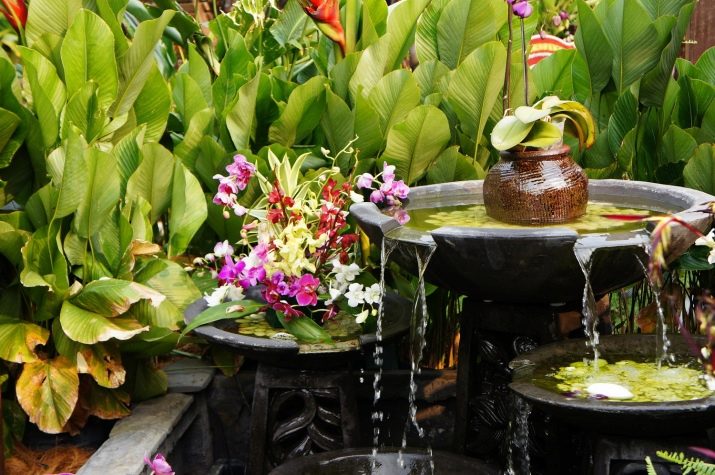
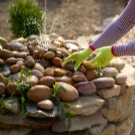
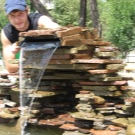
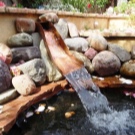
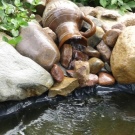
You can place plants (both in the waterfall itself and along the banks), launch fish or other living creatures. In moving, oxygenated water, they will feel very good. But in this case, you need to take into account the depth of the tank - if it is less than 1 m, the water will freeze in winter and the fish will die.
Plants planted on the shore of the reservoir contribute to the organization of a unique living space in which frogs, insects, and other lovers of humid and shaded places can live. And from an aesthetic point of view, planting plants along the banks of the waterfall is a good idea. Here, a kind of symbiosis is obtained - both the plants, which are supplied with the right amount of moisture, and the owners of the site, who receive a picturesque corner in their garden, benefit.
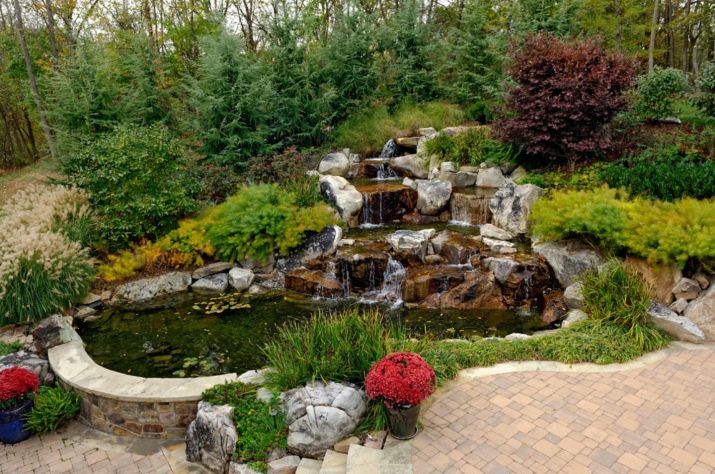
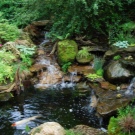
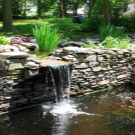
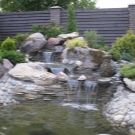


In general, the arrangement of the coastal zone is a very important point in the design of a waterfall. It should naturally fit into the landscape, emphasizing the features of the site.
Of course, it all depends on the style of the waterfall. In some cases, rocky shores without a single green spot will be more appropriate than lush vegetation - for example, if the reservoir is decorated in a minimalist style, or if a rock garden is "grown" on the site.
But in any case, you need to restrain your creative impulses.
Overloaded with decorative elements, the waterfall will lose its charm, become invisible against the background of the abundance of figurines, lanterns and other items designed to emphasize the natural beauty of the reservoir, and not hide it.
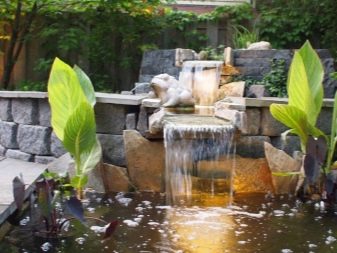

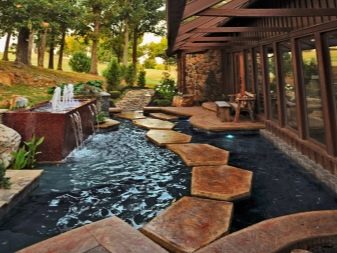
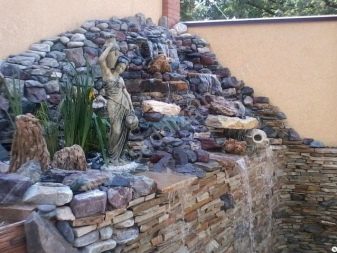
When decorating the cascades with stones, one must take into account that their surface has a significant effect on the nature of the flow:
- smooth flat stones will help to get a mirrored water wall;
- if you use cut, grooved boulders - the water will drain in separate jets;
- depressions in the middle of the stones will create a smooth, unhurried stream - water will gradually collect into these pits and slowly drain further;
- to get a powerful, impetuous stream, which scatters in small splashes, hitting the lower level, you need to let water under pressure between two closely laid cobblestones.
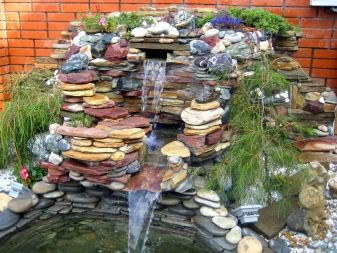
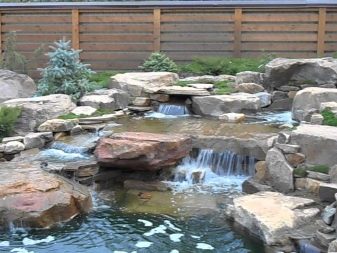
Near the reservoir, you can install a gazebo, bench or hang a hammock - you will get a wonderful resting place. The sound of falling water, rustle of leaves of coastal plants will give you peace, tranquility and harmony.
Any, even the smallest body of water will serve as a wonderful decoration for a summer cottage. Its creation does not require a lot of effort, time or money. And he is able to bring considerable benefit. These are not only decorative properties, but also practical ones - moistening the soil and air (which is very useful for plants, especially those that grow on the shore), attracting birds and beneficial insects that can settle in the garden and protect it from pests.
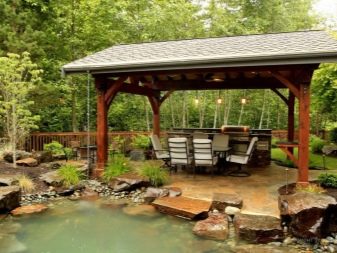

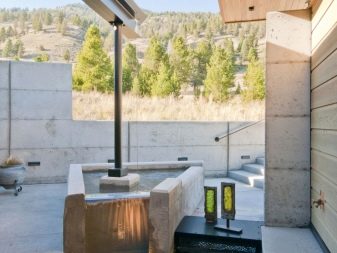
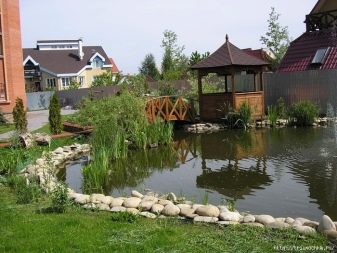
Beautiful examples and good options
At the summer cottage, you can create a wide variety of waterfalls - depending on its size.
Large-scale options, with many slopes and a voluminous bowl, will be appropriate in a large garden, where they will not take up most of the area. In this case, you can play with the height of the slopes, their location relative to each other, their number, power and direction of the jets, decor. A large waterfall will "withstand" a small embankment and even a bridge.
True, the creation of such a masterpiece will take more time, and more materials will be needed, not to mention a higher power pump. But it's worth it.
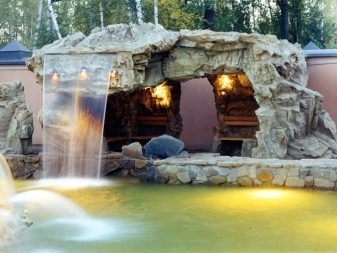
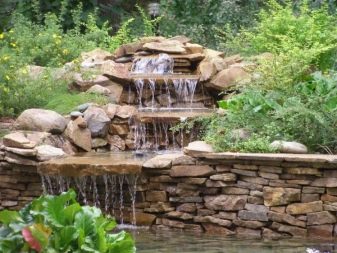
If the suburban area does not differ in solid size, you can arrange a mini-waterfall.He is in no way inferior to his big brothers. Except, of course, in terms of size.
A small, unpretentious waterfall is no less attractive than the multi-tiered options. He is also able to give peace, harmony, decorate any part of the garden, become the center of the entire landscape.
The hill, into which the ledges are made, can also be decorated with plants, turning it into a kind of alpine hill. Moisture-loving succulents, mosses, ornamental lichens will help bring this idea to life.
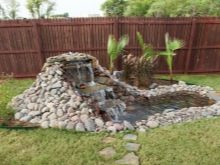
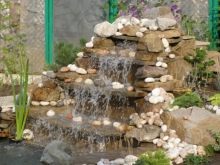
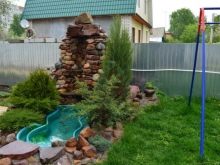
If you want something extraordinary, you can arrange a dry waterfall. In this case, the water flowing down from the ledges does not collect in the tank, but disappears, at first glance, no one knows where. It looks pretty impressive.
In fact, the water flows into a hidden underground and disguised reservoir, from where the pump pumps it again to the top of the ledges.
For a garden decorated in a modern style, where preference is given to geometric shapes and precise proportions, a waterfall made of concrete is suitable. The strict geometry of the lines, concrete structures will perfectly fit into the overall design.
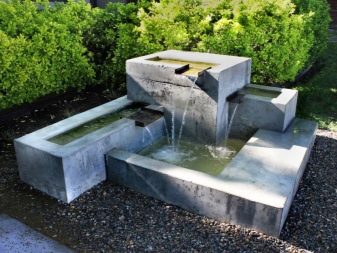
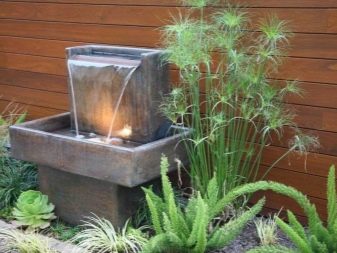
For information on how to create an artificial fountain with a waterfall with your own hands, see the next video.



































































Well done, golden hands.
The comment was sent successfully.